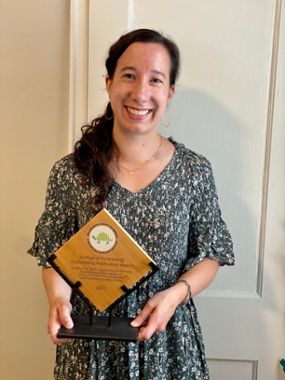Ecologists honored for endangered species forecasting work
A few years ago, quantitative ecologists and EEB members Elise Zipkin with postdoctoral scholar Sarah Saunders (now an alumna) created a new statistical model to understand the threats endangered species face. As federal agencies continue to use those findings, the research has earned this year’s Ecological Forecasting Outstanding Publication Award from the Ecological Society of America (ESA).
When the U.S. Fish and Wildlife Service needed help boosting the Great Lakes population of piping plovers, Saunders, then a postdoctoral researcher in Zipkin’s Quantitative Ecology Lab, teamed up to uncover threats to the endangered shorebird’s recovery. Saunders developed an analysis framework to estimate and predict the numbers of endangered plovers based on environmental variables.
Their award-winning paper, published in the Journal of Applied Ecology in 2018, combines Saunders’ work on statistical modeling during her postdoc, along with her Ph.D. research on piping plovers, and makes a strong case for predator control.

Sarah Saunders
“As we developed this project, I was able to take my two passions, ornithology and quantitative ecology, and put them together,” said Saunders, now a conservation biologist in the Science Division of the National Audubon Society and the paper’s lead author. “It’s an honor to be recognized for this work not only because it addresses an important conservation issue, but also because this paper synthesizes a lot of my accomplishments as a grad student and then as a postdoc.”
The scientific achievement lies in how the statistical model used 24 years of different data streams on plover demography and abundance in the Great Lakes region to project the future size of the population while taking multiple sources of uncertainty and potential management actions into account.

Elise Zipkin
“This paper demonstrates a creative way of integrating various available data sources to understand the past and predict what might happen in the future to an imperiled species under different conservation scenarios,” said Zipkin, associate professor in the College of Natural Science’s Department of Integrative Biology, director of the Ecology, Evolution, and Behavior Program (EEB), and the paper’s senior author. “It’s innovative science with important real-world applications.”
Read more from the College of Natural Science



